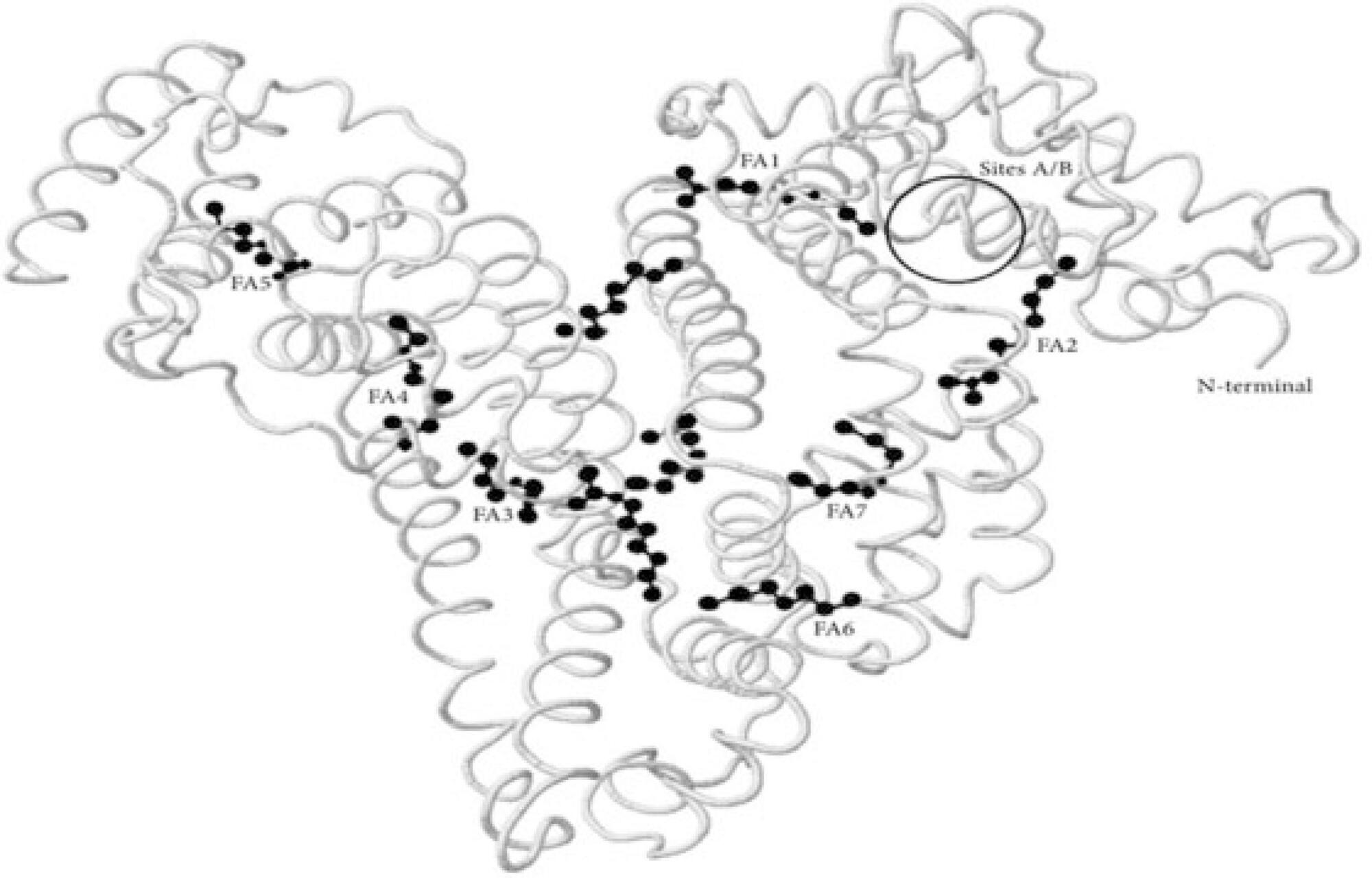Summary
Revista Brasileira de Ginecologia e Obstetrícia. 2014;36(3):131-138
DOI 10.1590/S0100-72032014000300007
To adapt the Pregnancy and Sexual Function Questionnaire (PSFQ) for use in Brazil and to evaluate its psychometric properties.
An adaptation and validation study was performed with women in the last trimester of pregnancy living in Rio Branco, Acre. The questionnaire was translated into Portuguese, reviewed and evaluated by specialists, and a pretest was carried out. Construct validity was evaluated by factor analysis; internal consistency was estimated by Cronbach's alpha coefficient and MacDonald's omega, and reproducibility was evaluated by the kappa statistics and test-retest in a sample of pregnant women.
Factor analysis identified the following six domains: subjectivity, pain and discomfort; frequency and receptivity; desirability; satisfaction; orgasm; and stimulus. The internal consistency by Cronbach's alpha was 0.6, while MacDonald's omega was 0.7. The kappa value was higher than 0.7 in all questions.
The Portuguese version of the PSFQ was considered to be adequate for evaluating sexual function during pregnancy.
Summary
Revista Brasileira de Ginecologia e Obstetrícia. 2004;26(2):131-138
DOI 10.1590/S0100-72032004000200008
PURPOSE: to analyze the management for reduction of HIV transmission from mother to infant in infected pregnant women who delivered in public maternity hospitals of the municipality of Fortaleza, Ceará, from 1999 to 2001. METHODS: a descriptive study where data of SINASC, SINAN and LACEN data bank systems were cross-checked looking for HIV-infected pregnant women, followed by an active search for complementary information on the subject through medical records of the maternity hospitals. RESULTS: a hundred and thirty-eight pregnant women infected with HIV were identified. It was observed that 35.5% knew their serum status before pregnancy and 48.6% (67/138) were diagnosed during the prenatal visits. Of those 101 women that knew their serum status before or during pregnancy, only 47.5% followed all steps of prophylaxis, including the management of the newborns. The previous knowledge of the serum status was found to be significantly related to following the correct steps of prophylaxis (p<0.001). CONCLUSIONS: an increasing number of women who had no access to the different strategies for the reduction of vertical transmission were found in Fortaleza, Ceará, especially among those who became pregnant without knowing their serum status. Continuous awareness and training are very important for all health care providers involved in attending the pregnant women for the application of correct management in order to reduce HIV transmission from mother to infant.
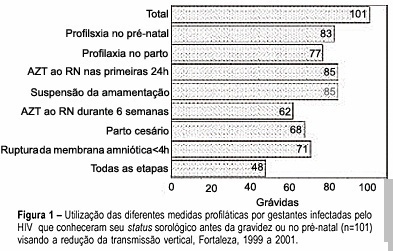
Summary
Revista Brasileira de Ginecologia e Obstetrícia. 2009;31(3):131-137
DOI 10.1590/S0100-72032009000300005
PURPOSE: to evaluate the effects of tamoxifen on the expression of TGF-β and p27 proteins in polyps and adjacent endometrium of women after menopause. METHODS: prospective study with 30 post-menopausal women with diagnosis of breast cancer, taking tamoxifen (20 mg/day), presenting diagnosis of suspect endometrial polyps through transvaginal ultrasonography, and submitted to diagnostic and surgical hysterectomy to withdraw the polyps and adjacent endometrium. A immunohistochemical study has been done to verify the expression of the TGF-β and p27 proteins in the polyps and adjacent endometrium. These proteins' quantification has been done by morphometry. RESULTS: the patients' average age was 61.7 years old; their average age at the menopause onset was 49.5; and the average of using tamoxifen was 25.3 months. The average concentration of positive cells for TGF-β protein in the glandular and stroma polyp epithelium was 62.6±4.5 cells/mm². For the p27, in the glandular polyp epithelium, it was 24.2±18.6 cells/mm² and for the stroma, 19.2±15.2 cells/mm². There was no significant difference between the expression of TGF-β and p27 in the glandular epithelial form the polyps and the adjacent endometrium. The expression of proteins in the polyp and adjacent endometrium with its respective glandular and stroma epithelium showed a significant difference for the p27 protein (r=0.9, p<0.05). CONCLUSIONS: we have concluded that the TGF-β expression is not related to the effect of tamoxifen on the growing of endometrial polyps, but the absence of polyps' malignization by tamoxifen may be explained by the high expression of p27 protein in its glandular epithelium.
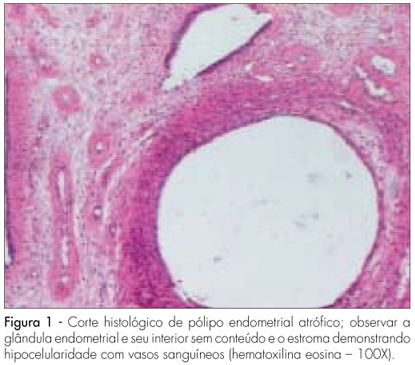
Summary
Revista Brasileira de Ginecologia e Obstetrícia. 2021;43(2):131-136
To evaluate whether performing preoperative urodynamic study influences postoperative urinary symptoms of women with stress urinary incontinence that underwent transobturator sling.
Retrospective analysis of patients treated for stress urinary incontinence by transobturator sling from August 2011 to October 2018. Predictor variables included preoperative urodynamic study, age, incontinence severity, body mass index, preoperative storage symptoms and previous anti-urinary incontinence procedure. Outcome variables were postoperative subjective continence status, storage symptoms and complications. Logistic regression after propensity score was employed to compare outcomes between patients who underwent or not pre-operative urodynamic study.
The present study included 88 patients with an average follow-up of 269 days. Most patients (n = 52; 59.1%) described storage symptoms other than stress urinary incontinence, and 38 patients (43.2%) underwent preoperative urodynamic studies. Logistic regression after propensity score did not reveal an association between urinary continence outcomes and performance of preoperative urodynamic study (odds ratio 0.57; confidence interval [CI]: 0.11-2.49). Among women that did not undergo urodynamic study, there was a subjective improvement in urinary incontinence in 92% of the cases versus 87% in those that underwent urodynamic study (p = 0.461). Furthermore, postoperative storage symptoms were similar between women who did not undergo urodynamic study and those who underwent urodynamic study, 13.2% versus 18.4%, respectively (p = 0.753).
Preoperative urodynamic study had no impact on urinary incontinence cure outcomes as well as on urinary storage symptoms after the transobturator sling in women with stress urinary incontinence.
Summary
Revista Brasileira de Ginecologia e Obstetrícia. 2016;38(3):132-139
To evaluate the compliance and degree of satisfaction of nulligravida (has not given birth) and parous (had already given birth) women who are using intrauterine devices (IUDs).
A cross-sectional cohort study was conducted comparing nulligravida and parous women who had had an IUD inserted between July 2009 and November 2011. A total of 84 nulligravida women and 73 parous women were included. Interviews were conducted with women who agreed to participate through telephone contact. Statistical analysis was performed with Student s t-test and Mann-Whitney test for numeric variables; Pearson s chi-square test to test associations; and, whenever pertinent, Fisher s exact test for categorical variables. A survival curve was constructed to estimate the likelihood of each woman continuing the use of the IUD. A significance level of 5% was established.
When compared with parous women, nulligravida women had a higher education level (median: 12 vs. 10 years). No statistically significant differences were found between the nulligravida and parous women with respect to information on the use of the IUD, prior use of other contraceptive methods, the reason for having chosen the IUD as the current contraceptive method, reasons for discontinuing the use and adverse effects, compliance, and degree of satisfaction. The two groups did not show any difference in terms of continued use of the IUD (p = 0.4).
There was no difference in compliance or the degree of satisfaction or continued use of IUDs between nulligravida and parous women, suggesting that IUD use may be recommended for women who have never been pregnant.
Summary
Revista Brasileira de Ginecologia e Obstetrícia. 2011;33(7):132-136
DOI 10.1590/S0100-72032011000700003
PURPOSE: To study if rheumatoid arthritis (RA) is influenced by age at menarche, number of pregnancies and reproductive life span. METHODS: This was a cross-sectional and retrospective study of medical records of 247 RA patients. We collected data on menarche, menopause, number of pregnancies, autoantibodies, serositis, rheumatoid nodules, and functional index of Steinbrocker. Association studies were done using the Student t and Mann-Whitney tests and correlation was determined by the Pearsonand Spearman tests. The level of significance adopted was 5%. RESULTS: The mean age at diagnosis of RA was 43.2±14.1 years, the median age at menarche was 13 years and the median number of pregnancies was 3. Rheumatoid factor was present in 63.9% of the patients, 20% had antinuclear factor, 8.8% rheumatoid nodules, 2.8% had pleural effusion, and 2.4% had pericarditis. The Steinbrocker functional index showed that 45.6% had a score of 1, 40.8% a score of 2, 3 score of 9.1, and 4.3% a score of 4. We found an inverse correlation between the number of pregnancies and age at onset of RA (p CONCLUSION: A precocious menarche and brief reproductive life indicate a poor prognosis regarding pleurisy. A larger number of pregnancies and late menopause show a protective effect, delaying the onset of the disease.
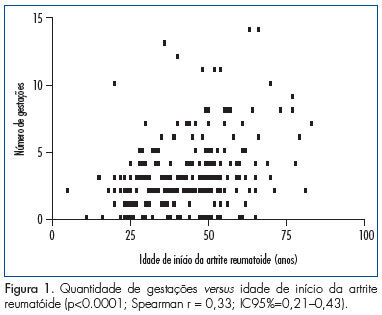
Summary
Revista Brasileira de Ginecologia e Obstetrícia. 2012;34(3):133-138
DOI 10.1590/S0100-72032012000300008
The atypical and more severe form of Mayer-Rokitansky-Kuster-Hauser syndrome (MRKH) or MRKH type II is also known as MURCS association, an acronym meaning aplasia/hypoplasia of Müllerian ducts (MU), congenital renal dysplasia (R) and cervico-thoracic dysplasia (CS). It affects female patients with normal karyotype and ovarian function, evolving to primary amenorrhea. It has an incidence of 1:50,000, but it is underestimated due to late diagnosis and undefined etiology. We describe the cases of a child and an adolescent in order to predict the diagnosis even in childhood, before the onset of amenorrhea. Patients had in common renal malformation, agenesis or hypoplasia of Müllerian derivatives and vertebral anomalies, establishing the diagnosis of MURCS. The relevance of this paper is to show the importance of further investigation when some of pathologic signs are present, researching correlated abnormalities in order to establish an early diagnosis and consequently to provide guidance to the patients and their families about the best way to conduct the case, including genetic counseling.
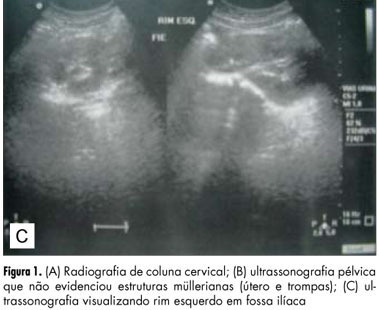
Summary
Revista Brasileira de Ginecologia e Obstetrícia. 2020;42(3):133-139
Ischemia-modified albumin (IMA)is a modified type of albumin protein that is formed under oxidative stress. This study aims to compare the levels of serum IMA between normotensive and preeclamptic pregnancies and to evaluate the relationship between the severity of the disease.
A total of 90 pregnant women aged between 18 and 45 years participated in this cross-sectional study. The levels of serum IMA were measured by enzyme-linked immunosorbent assay in 30 preeclamptic pregnant women with the severe signs of the disease, 30 preeclamptic pregnant women, and 30 normotensive pregnant women.. The study was designed as a cross-sectional clinical study.
When the demographic characteristics were examined, statistically significant differences were found between the groups in terms of age, gestational week at birth and blood pressure. Age was higher in the preeclampsia with signs of severity group than in the normotensive group (p = 0.033). Pregnancy week was significantly the lowest in the preeclampsia with the severity signs group (p = 0.004). In normotensive patients, IMA levels were lower than in the preeclampsia groups (p = 0.001) but there was no significant difference in terms of severity of disease (p = 0.191). According to laboratory data; only the creatinine level was significantly different between the groups.
The levels of serum IMA were higher in patients with preeclampsia than in healthy pregnancies. However, there was no significant correlation in terms of preeclampsia severity; more extensive, prospective and long-term studies are needed.
